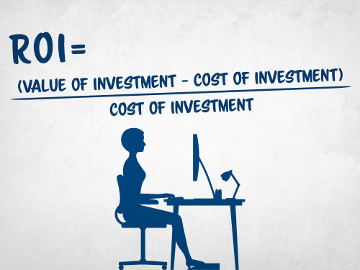- Home
- Loss Control
- Loss Control Insights
- 3 Steps for Selling Ergonomics to Management
EMC Senior Engineer Paul Porter knows how beneficial an ergonomics program can be to businesses and why it’s important for every company to build a case for improving ergonomics. While most managers recognize that ergonomics reduces employee injuries, absences and claims, it also increases efficiency, productivity, employee morale and retention. “When you look at all of the areas that ergonomics touches, it’s clear that it can play a significant role in a company’s success or failure,” Paul says.
Building a case to sell ergonomics to management takes commitment, but it’s worth it. Follow Paul’s 3–step process for developing an ergonomics program and selling it.
1. Do your research
Management must know how ergonomics will help the bottom line, so you’ll need to show the value of your proposal. Look for backup information on how investing resources, time and effort creates results. These resources can help you get started:
- 25 Ways Ergonomics Can Save You Money
- The Unexpected Benefits of Good Ergonomics
- Increasing Productivity With Proper Ergonomics
- The Influence of Production Ergonomics on Product Quality
- Ergonomics in Lean Manufacturing
- How to Reduce Turnover With Ergonomics
You’ll need to pinpoint an end goal, such as results tracking, ongoing training and periodic reviews.
Actively network with others in your industry facing similar issues, retrieve your company’s workers’ compensation documentation to find potential savings and check with material handling companies for additional industry–based facts and figures. Take note of useful details before moving to the next step.
One example that might make management sit up and notice is the value of a minute. “If 10 employees reach for parts with extended arms one extra minute every hour over 260 work days, the time adds up to 43 wasted workdays each year,” Paul illustrates.
2. Crunch the numbers
Weigh your options and put a plan on paper, focusing on return on investment (ROI). If you aren’t a financial expert, ask your financial controller or accounting department to help.
Focus on the time and dollars to implement the program (and/or individual components), risks and potential payback to demonstrate that the program is financially sustainable. As you plan a budget, estimate input costs:
- Time spent exploring options, training and implementation
- Equipment costs, installation and retooling
- Ongoing evaluations and periodic adjustments
Paul recommends these resources for estimating the benefits of your recommendations:
- Humantech, a respected ergonomics consulting and research company
- Ergonomics Cost Benefit Calculator, Cost Benefit Calculator Instructions and Cost Benefit Calculator Example—Palletizing Solution from Washington State Department of Labor
- The Economics of Ergonomics by Dr. Alan Hedge, Cornell University
- Humantech Summary of Benchmarking Study Results: Cost and Return on Investment of Ergonomics Programs (Return on Investment section)
3. Hone your sales skills
After compiling facts and figures, it’s time to develop your sales pitch. Base presentations on your company mission, values and continuous improvement philosophy. If you can explain the benefits of ergonomics in terms that are meaningful and that make sense within your company’s culture, selling ergonomics will be easier.
Address the specialized needs of management team members. Ask key decision makers questions throughout your research and recognize that specific results are important to different managers. For example, the financial controller may want to know about ROI and how ergonomics will reduce cash reserve funds, while the human resources director may want details on improving employee satisfaction and retention.
If you are nervous about presenting, read these tips to help you feel more comfortable in front of an audience: 18 Tips for Presentations and 16 Ways to Dramatically Improve Your Presentation Skills. Radiate confidence and exhibit a deep understanding of the plan and your commitment to making it work.
Get in touch
Need help? We’re here for you! Whether you have questions or need personalized assistance, your local office is ready to support you.
Loss Control Insights
Stay informed with the latest news and receive actionable safety tips, all carefully curated by our team of experts.
